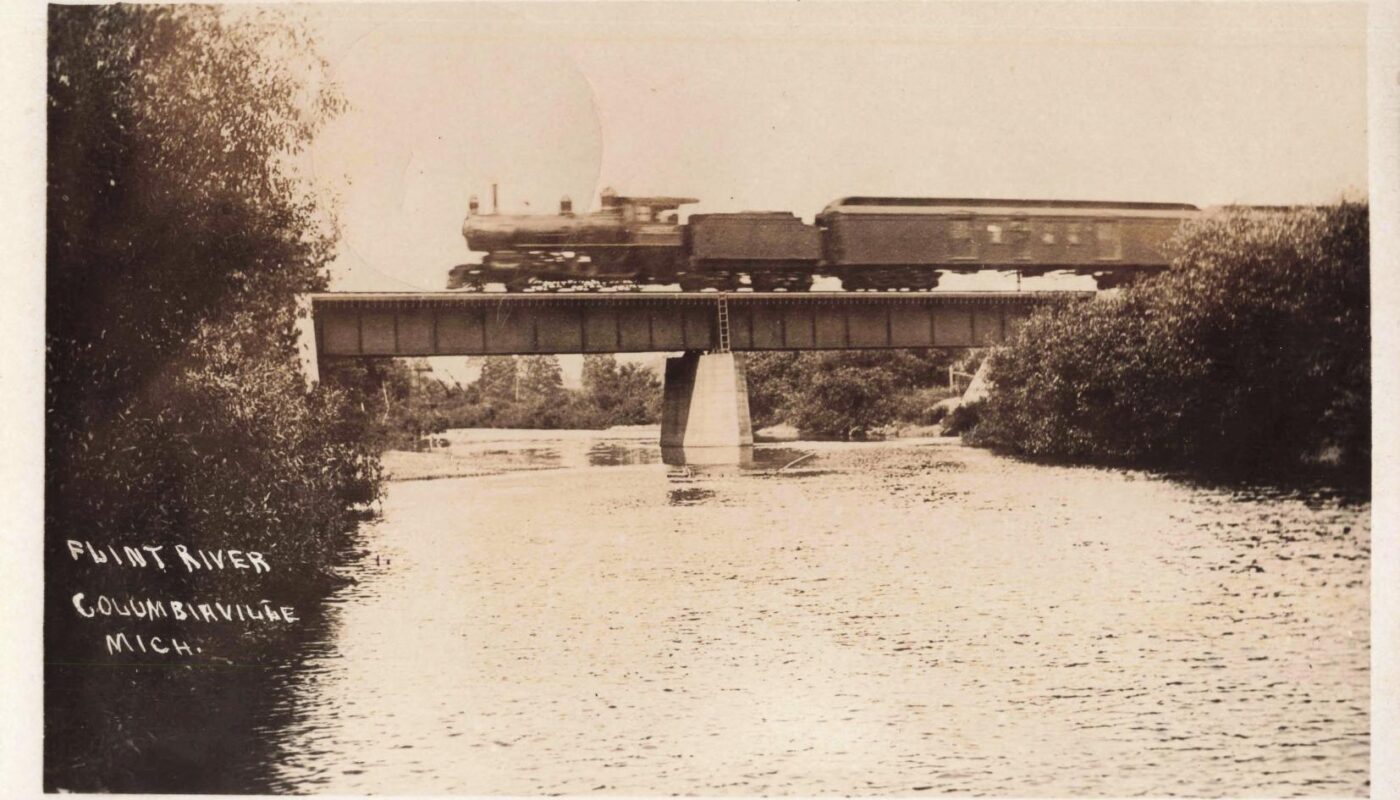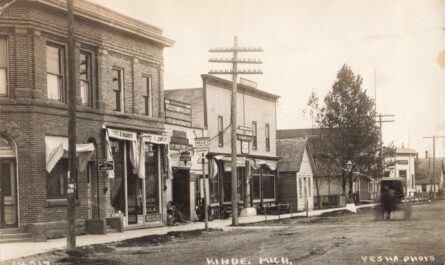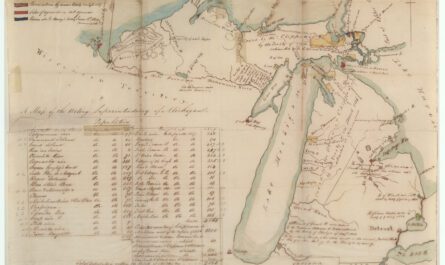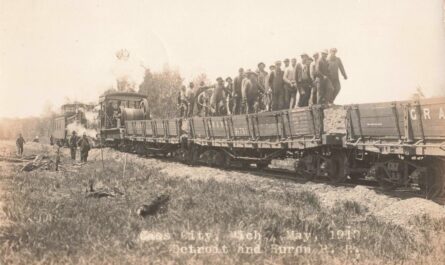In the early 1900s, Columbiaville, Michigan, was a working village shaped by the woolen industry, railroads, and Main Street commerce. Located along the Flint River in Lapeer County, the town’s red-brick buildings, factory whistles, and steady train traffic defined its rhythm. Today, Columbiaville Michigan history, rich in community and industry, can be glimpsed through rare photographs from that period that give us a detailed look at daily life in one of Michigan’s most industrious small towns, reflecting the essence of Columbiaville Michigan history.
A Village Anchored by the River and Rails
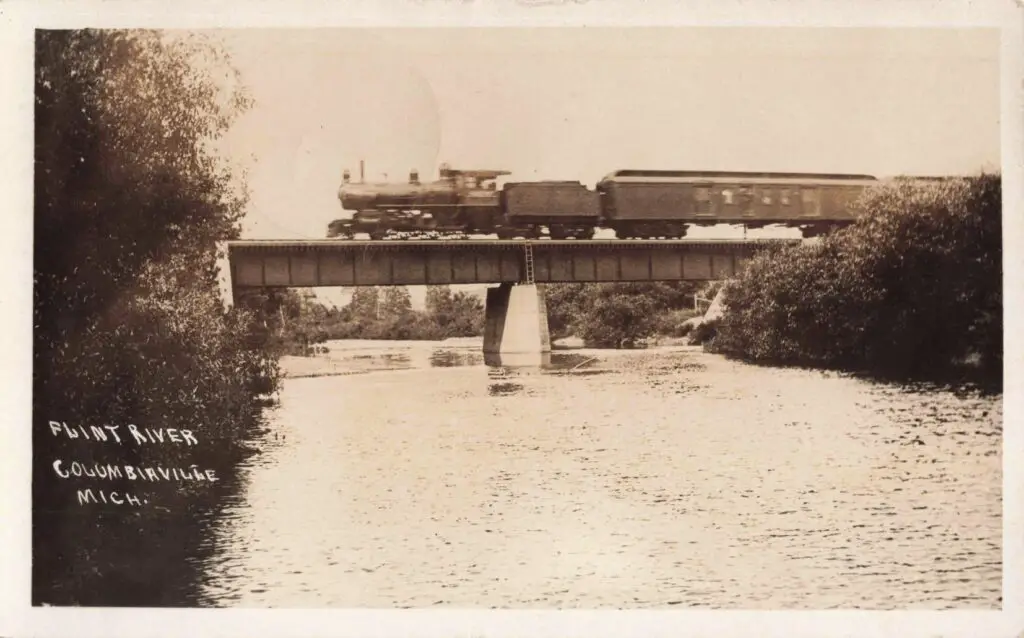
Columbiaville was never meant to be a boomtown. Founded along the banks of the Flint River, its lifeblood came by train and flowed from the local woolen mill. In the early 1900s, it was a picture of practical industry, where lives revolved around work, commerce, and community.
Nestled in Lapeer County, Columbiaville, Michigan, is a village rich in history and community spirit. Established in 1847 by Levi D. Cutting, a carpenter and cabinet maker, the village saw its first major development when George and Henry Niver built a sawmill along the Flint River in 1848. Initially known as Niverville, the settlement was renamed Columbiaville in 1857 to avoid confusion with another Michigan town.
The Flint River train bridge carried both freight and families. The depot stood proud — a Romanesque-style red-brick building that welcomed newcomers and gave old friends a place to part with a wave.
Industry With a Human Face
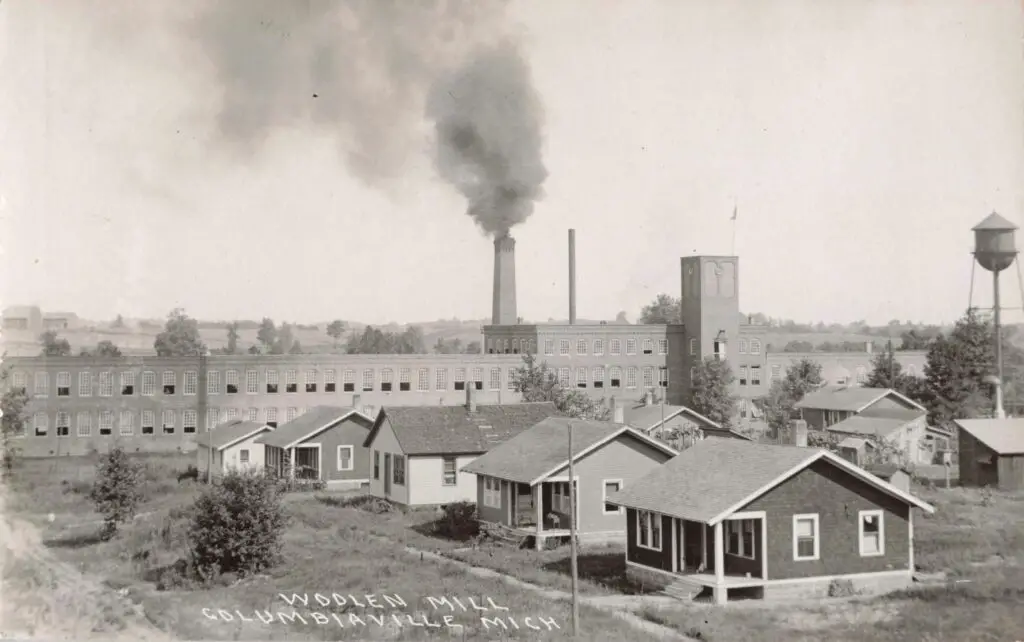
The Columbiaville Woolen Mills defined the town’s economy. With rows of tall windows and steady smoke rising from its stacks, the mill produced durable goods and offered dependable jobs. Modest homes for workers stood just a short walk away, creating a close-knit neighborhood. This wasn’t factory work removed from the town. It was central to it. The mill’s hum was the sound of food on the table and shoes on growing feet.
Downtown Was Built to Last
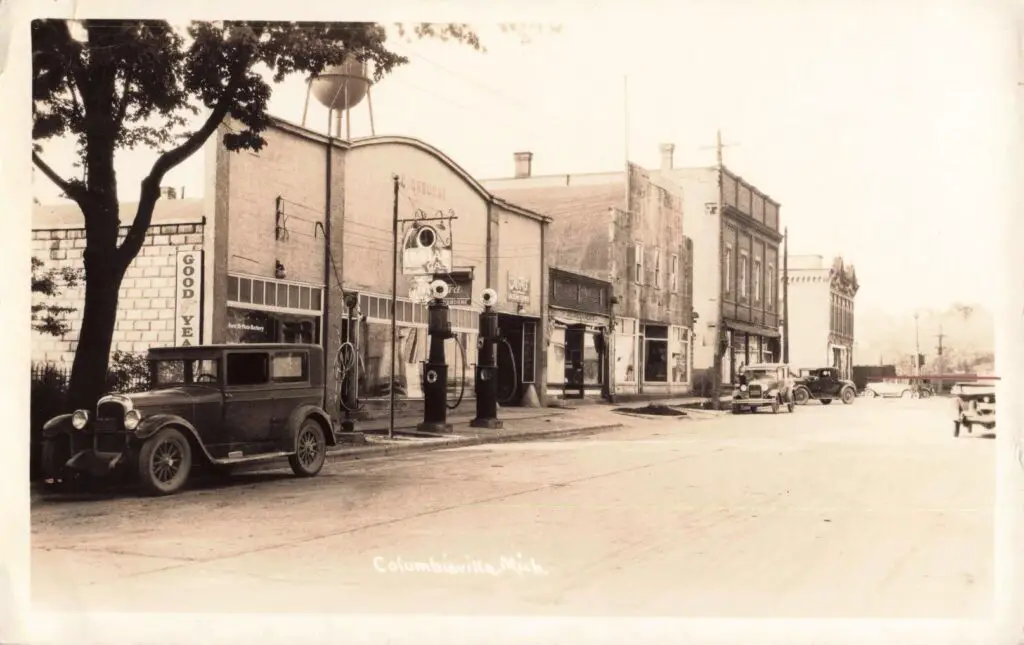
Main Street was more than a row of businesses — it was a public square in motion. Water Street included cafés, general stores, and even a movie house. The Marathon House Hotel doubled as a community gathering place, welcoming rail passengers and housing family reunions or holiday feasts.
The Opera House Block was Columbiaville’s cultural heart. Whether it was a traveling performance, a political rally, or a school program, the building stood tall for every event that mattered.
Moments of Escape: Tau Beta Camp
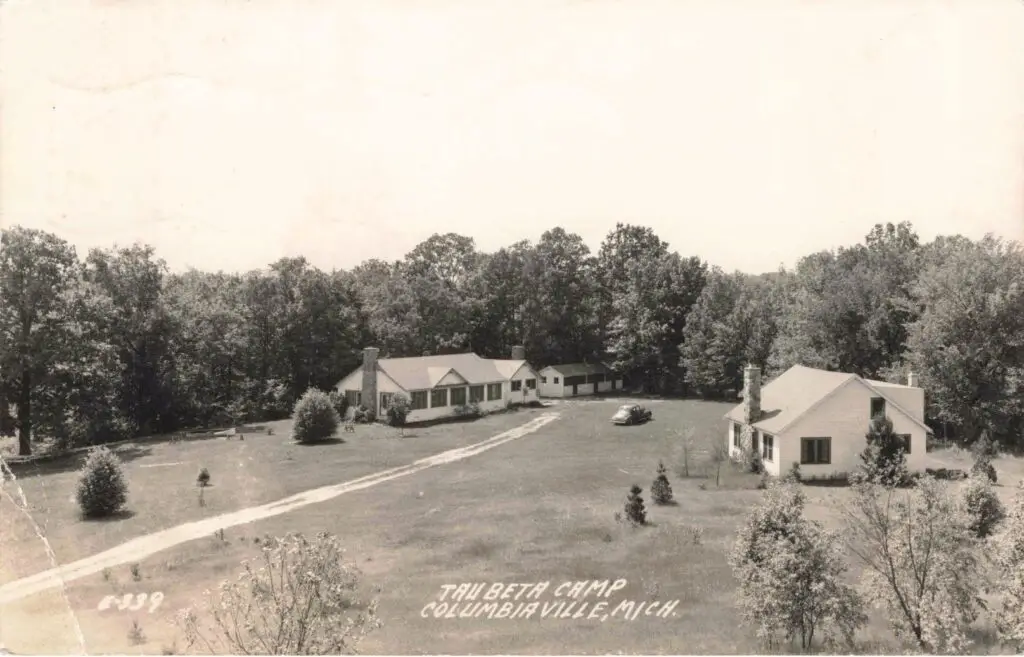
Not far from town, the Tau Beta Camp was a quiet retreat in the woods. Sponsored by Detroit’s Tau Beta Association, it offered urban girls a place to breathe fresh air and make lasting memories.
This camp reflected the wider values of the community — health, modesty, and the simple pleasure of being outside.
Columbiaville Today
The rich Columbiaville Michigan history is further preserved through local events that celebrate its heritage and community spirit. Surrounded by the Holloway Reservoir, Columbiaville offers scenic views and recreational opportunities, including fishing, boating, and swimming. The village hosts annual events like the Chili Cook-Off, Polar Plunge, and Santa/Fire Truck Parade, fostering a strong sense of community.
Today, those interested in Columbiaville Michigan history can explore numerous resources and archives that detail its fascinating past.
The Columbiaville Historical Society preserves the village’s rich heritage, offering exhibits and artifacts that chronicle its development. Marathon Township Park provides residents and visitors with outdoor spaces for leisure and gatherings.
A Town That Held Its Own
Columbiaville didn’t seek attention. It earned respect. Its rhythm was set by whistles and footsteps, by the hush of church bells and the clang of a screen door. The town’s past is still etched into brick walls, railroad ties, and fading photographs — all telling the same quiet story of a place that worked, welcomed, and endured.
Columbiaville never chased growth — it built a life around what mattered: work, connection, and community. These photos capture a time when the mill ran hot, trains were on time, and every corner of the village had a purpose. A century later, the stories still hold up — in brick, in rails, and in memory.

